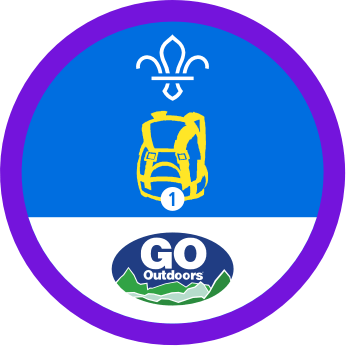Street orienteering
You’ll need
- Pens or pencils
- Scrap paper
- Compass
- Maps of your local area
Before you begin
- Gather enough maps and compasses for each team to have one.
- Write a list of places of interest in the local area that you can walk to from your meeting place – think about places such as doctors’ surgeries, cinemas, local parks, train stations, and schools. You’ll need six places for each team. It’s OK if you need to use the same place for more than one group.
Plan your walk
- Split everyone into teams of up to five people.
- Give each team a list of places, a map, a compass, some scrap paper, and some pens or pencils.
- Get each team to plan a route that passes the six places of interest on their list, in the same order as they’re listed.
- They should next turn their route into a route card, breaking down each stage of their route into instructions. They shouldn’t put the name of any of the places of interest, but should use compass directions, grid references, and road names to explain where people should walk. The route cards should start and finish at the meeting place.
- While each team’s working on their route card, go around the groups and check that their cards are clear and easy to understand.
Here is an example route card that can be used.
|
Directions |
Location |
|
Leave the meeting place and go west along Main Street. |
Write the name of the first location here. |
|
Go north-east along Albert Drive. |
|
|
At the end of Albert Drive, head to grid reference 378 902. |
|
|
From grid reference 378 902, head south for 200m. The first location is on the right. |
Time to walk
- Each team should swap route cards with another team.
- Make sure everyone’s prepared with all the equipment they need and dressed appropriately for the weather.
- Get each team to head outside with a leader and follow their route card.
- Whenever a team reaches a place of interest, they should write its name on their route card.
- Once everyone’s finished their routes and returned to the meeting place, they should pass the route cards back to the team that created them.
- The teams should check how well people did. Did they get to all of the right places of interest?
Reflection
This activity was a chance for people to value the outdoors. Did people enjoy being inside? What did people notice as they were figuring out their routes? Did focusing on where they were going and following a route they hadn’t planned themselves help them feel connected to their area?
This activity also needed people to be team players. Was it easy to make a route card as a team? How did teams manage people’s different suggestions? How did people work together while following route cards and walking?
Safety
All activities must be safely managed. You must complete a thorough risk assessment and take appropriate steps to reduce risk. Use the safety checklist to help you plan and risk assess your activity. Always get approval for the activity, and have suitable supervision and an InTouch process.
- Hiking and walking
Follow the guidance for activities in Terrain Zero, or the guidance for each the adventurous activity.
- Dark
Provide some light, so the environment isn’t completely dark. Everyone must be able to see others and move around the area safely.
- Road safety
Manage groups carefully when near or on roads. Consider adult supervision and additional equipment (such as lights and high visibility clothing) in your risk assessment.
- Snow and ice
Be careful when activities involve snow and ice. Check surfaces and reduce the risk of slipping where possible. Have appropriate supervision for this activity.
To make it trickier, ask people to only use six figure grid references. You could also complete the activity in an unfamiliar area.
- Make sure the routes are accessible for everyone – you may need to mark areas such as steps on the maps, so everyone knows to avoid them. Enlarge resources like maps if you need to.
- It’s OK if anyone’s not confident with reading or writing – not everyone needs to read or write, most of the activity can happen as a discussion.
- If it’s likely to get dark, make sure people have torches.
All Scout activities should be inclusive and accessible.
You can use the same skills to plan a route for a hike. Grid references and landmarks are useful to identify key places along the route.
Young people could make their own lists of places of interests.


